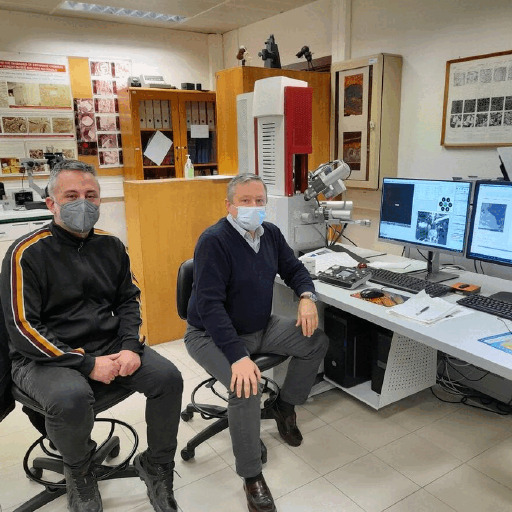User: Nikiforos Meimaroglou
Organisation: National Technical University of Athens
Technique requested: Simultaneous Thermogravimetry and Differential Thermal Analysis (TG-DTA)
Field emission scanning electron microscope with Energy Dispersive X-ray microanalysis System (FE-SEM / EDS) + ED-XRF
Facility: National Laboratory for Civil Engineering
This project was conducted by the Greek N.P.O. Boulouki-Itinerant Workshop on Traditional Building Techniques, within the programme ‘Under the Landscape: Therasia 2021-2022’. The research objective is to shed light on the historical use of local volcanic materials in the unique architectural paradigm of cave settlements on the small island of Therasia, part of Santorini’s volcanic complex. The so-called ‘theran earth’, the pumiceous tephra that covered the area after the Minoan eruption of 17th century B.C., is known in the history of architecture as a pozzolanic material, which along with the use of aerial lime provides long-lasting hydraulic mortars. This technology has been in use in the area since antiquity and is similar to the Roman technology, enabling us to discuss an ‘Aegean analogue’.
Having assessed the physical, mechanical and mineralogical properties of samples from diverse building materials from a historical cave settlement in Therasia, further advanced technologies were deemed necessary for obtaining a deep insight into their microstructure. IPERION HS gave our team a unique opportunity to conduct dedicated research along with distinguished experts from LNEC in Portugal. The outcomes of this collaboration were: i) new evidence on the production technology of some of these materials, i.e. the use of seawater and gypsum in several cases, ii) documentation on the existence of hydraulic phases and examination of their morphology, iii) identification of several different layers in the plastering system, iv) basic training on the use of advanced SEM- EDX equipment. Our ongoing research aims to re-introduce the use of local theran tephra and traditional mortars’ technology into contemporary construction rationale of the area. Our team is currently assessing the performance of traditionally made mixes based on the characterisation of the original materials, while preparing a handbook on local building techniques, as a way to disseminate the knowledge.

